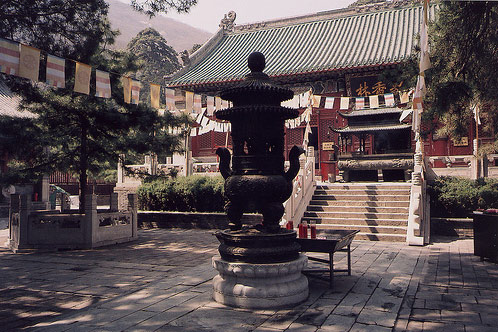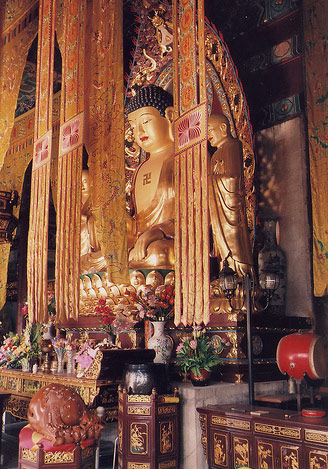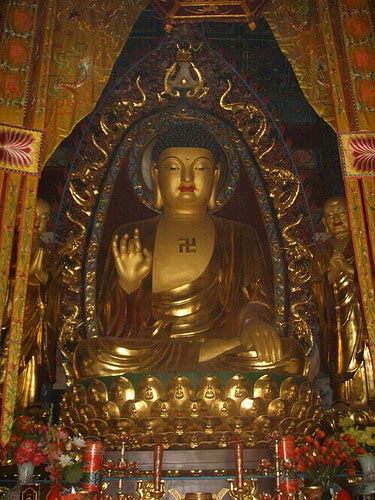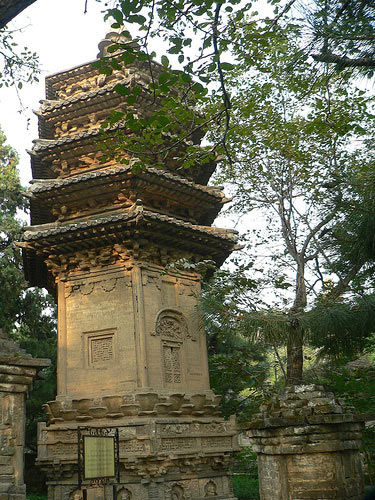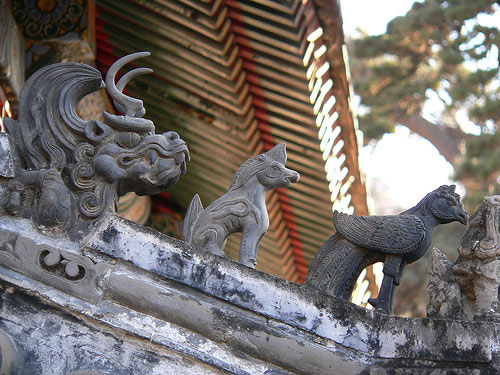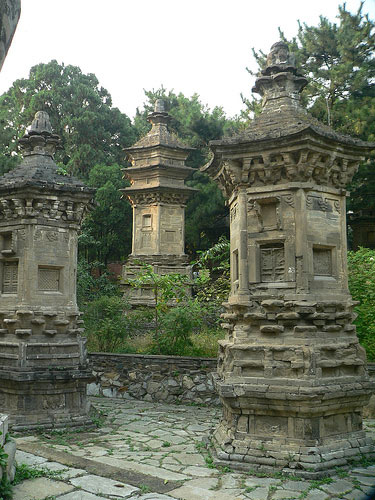The Tanzhe Temple (literally "Temple of Pool and Zhe Tree") is a Buddhist temple situated near China National Highway 108 in the Mentougou District, a mountainous area to the west of Beijing.
The temple is built on a hillside and consists of various pavilions, prayer halls, courtyards and a group of pagodas dating from the Yuan, Ming and Qing dynasties. At one time, it was one of the most important temples in the nation.
Built in the Jin Dynasty (265–420), it has an age of around 1,600 years. The area of the entire temple is 100 mu (6.8 hectares), and its arrangement of halls is akin to that found in the Ming and Qing dynasties.
The temple's central hall is its Mahavira Hall. 24 metres in length, 33 metres wide, and with a depth of 20 metres. Buddhist monks regularly perform chanting here, to the accompaniment of woodblocks, cup gongs, and bells.
The complex is extensive, and is said to have provided a model for the layout of the Forbidden City. Above and to the right of the main courtyard lies a rare stupa yard (TaYuan), with stone monuments built in different styles over a period of several centuries and housing the remains of eminent monks.
Tanzhe Temple also has some other features. The bed of its former Dragon Pool, which has dried up, sits on the hill at the back of the temple. The zhè trees (Cudrania tricuspidata or Wild Mulberry), now few in number, are located in the temple as well. Their number has dwindled shockingly from the original thousand or so. There are also persimmon trees, as well as a stand of bamboo.
Tanzhe Temple has seen numerous monks practice their Buddhist art for the rest of their lives here, thus leaving many pagoda tombs in different styles close by the temple. Probably the best known is the one of Princess of Miaoyan, daughter of Kublai Khan, of the Yuan Dynasty. In order to redeem her father from killing so many people in battles, she converted herself to Buddhism, and spent the rest of her life here. Her pagoda tomb is a solid brick five-storey construction with elaborate eaves, with a smaller pagoda on each side for company.
As a cultural resort with a long history, the temple always attracts many tourists from home and abroad.
Travel tips:
Admission: 35 yuan
Tel: 010-6086-2505
Opening time: 8:00 to 17:30 in summer and 8:30-16:30 in winter.
Website: http://www.tanzhesi.com.cn/
How to get there:
The temple is easily accessible by taking bus no. 931 from the PingGuoYuan subway stop (at the west end of line one). Bus runs daily 7am-5:30pm, about every 30 minutes. Journey time is about 1 hour. Once at the subway stop, take exit D, turn right and continue straight a few minutes to the bus station; take the plain red and beige, rather than the red and yellow zhi version of the bus.
At weekends, the no. 7 tourist bus runs from the north east corner of QianMen (Sat-Sun 7am-8:30am, every 30 minutes; about 50 yuan), and includes a stop at the ShiHua Caves. April 15 and October 15.
(China.org.cn August 8, 2007)

